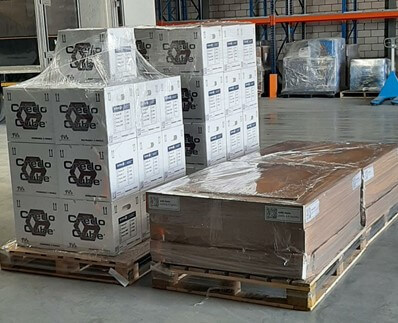In today’s rapidly evolving market landscape, businesses across various industries are increasingly recognising the importance of specialised logistics solutions, particularly within the cold chain sector. In this article, we’ll delve into the nuances that distinguish the cold chain from traditional supply chain models, exploring its unique components, management considerations, and the challenges it presents.

Differentiating the cold chain from the traditional supply chain
At its core, the cold chain represents a subset of the broader supply chain, focusing specifically on products that require precise temperature control throughout their journey. While the traditional supply chain encompasses the entire process of procuring, manufacturing, storing, and delivering goods, the cold chain narrows its focus to the transportation and storage of temperature-sensitive products. This distinction brings forth additional components and considerations that are unique to the cold chain, including specialised temperature monitoring, stringent storage requirements, and tailored shipping and packaging solutions.
Key components of the cold chain
Maintaining the integrity of the cold chain demands meticulous attention to detail at every stage of the supply chain. Here are some essential components:
- Storage: Adequate storage facilities equipped with refrigeration units are crucial for maintaining the required temperature range for perishable products. Thermal mapping studies ensure consistent temperatures and proper airflow throughout storage spaces.
- Shipping: Temperature-controlled transportation plays a pivotal role in preserving product quality during transit. Real-time tracking and monitoring of shipments minimise the risk of temperature excursions, ensuring products arrive at their destination in optimal condition.
- Packaging: Insulated containers, dry ice, and thermal packaging solutions are essential for preserving the temperature and quality of perishable products during transportation and storage.
- Temperature Monitoring: Real-time temperature monitoring allows for the identification of deviations that could compromise product quality. Continuous monitoring enables swift intervention in the event of unexpected environmental conditions or equipment malfunctions.

Why cold chain management matters
Effective supply chain management is critical for optimising operational efficiency, reducing costs, and mitigating risks associated with environmental disruptions. Key areas impacted by cold chain management include:
- Regulatory Compliance: Stringent regulations govern industries dealing with temperature-sensitive products, necessitating compliance with various guidelines and acts to ensure product safety and consumer trust.
- Sustainability: Optimising the cold chain contributes to sustainability efforts by reducing carbon emissions, minimising food waste, and preserving product efficacy.
- Food Waste Reduction: Precise temperature control and monitoring help prevent spoilage and extend the shelf life of perishable products, reducing food waste and supporting sustainability initiatives.
- Product Efficacy: Maintaining the integrity of pharmaceutical products and vaccines is essential for ensuring their effectiveness and patient safety, highlighting the importance of cold chain management in the healthcare sector.

Challenges in cold chain logistic
Despite its numerous benefits, cold chain logistics present several challenges, including:
- Temperature-sensitive Shipping: Ensuring consistent temperature control during transportation across varying climatic conditions is challenging, requiring real-time monitoring and intervention to prevent product quality issues.
- Data Visibility: Limited visibility into shipping data hampers proactive decision-making and makes it difficult to identify and rectify potential issues, emphasising the need for comprehensive data analytics solutions.
- Workforce Shortages: A shortage of skilled personnel with cold chain expertise poses challenges for companies, highlighting the importance of proper training and education in cold chain management.
Conclusion:
To sum up, the cold chain stands as a cornerstone in ensuring the integrity and quality of temperature-sensitive products throughout the supply chain. By comprehending its unique components, management considerations, and challenges, businesses can optimise their cold chain operations to meet the demands of today’s dynamic market landscape.
At Cold Chain Packing & Logistics, we are dedicated to providing tailored supply chain solutions that prioritise efficiency, reliability, and customer satisfaction. From freight forwarding to specialised pharma logistics, our expertise spans across various industries, offering comprehensive services designed to meet the unique needs of each client. Contact us today to discover how our cold chain solutions can take your logistics operations to the next level and ensure the seamless transportation and storage of your temperature-sensitive goods.